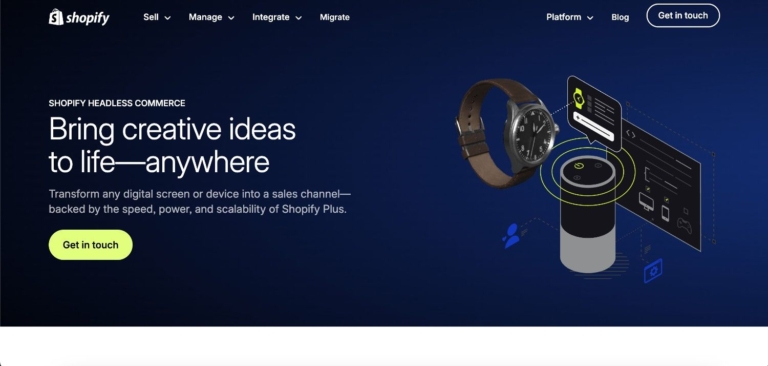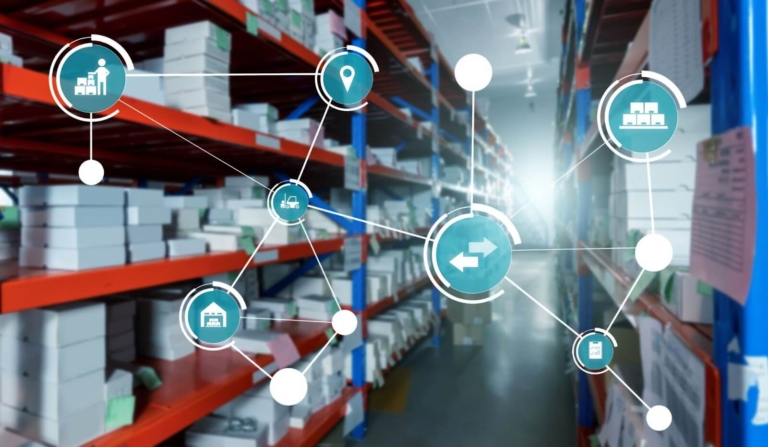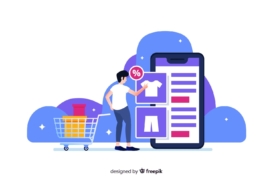Greetings! I'm Aneesh Sreedharan, CEO of 2Hats Logic Solutions. At 2Hats Logic Solutions, we are dedicated to providing technical expertise and resolving your concerns in the world of technology. Our blog page serves as a resource where we share insights and experiences, offering valuable perspectives on your queries.

Quick Summary
BigCommerce excels with comprehensive APIs, no transaction fees, and robust B2B capabilities, but requires more technical expertise. Shopify offers faster development through its Hydrogen framework and extensive ecosystem, but includes transaction fees.
Choose BigCommerce for complex product requirements; choose Shopify for speed-to-market and developer experience. Consider both development costs and long-term economics when making your decision.
So, you’re thinking about taking your e-commerce business headless but are torn between BigCommerce and Shopify?
We get it. After helping dozens of merchants navigate this exact decision, we can tell you it’s not as straightforward as picking the platform with the most features.
This guide will help you make the right choice between BigCommerce vs Shopify headless for your specific business needs, based on real implementation experience, not just marketing claims.
What Exactly is Headless Commerce?

Before diving into the comparison, let’s make sure we’re on the same page about what “headless” actually means.
Headless commerce architecturally separates your frontend (what customers see and interact with) from your backend (inventory, pricing, order management). This separation gives you unprecedented flexibility in creating custom shopping experiences while keeping your commerce engine running smoothly behind the scenes.
BigCommerce Headless: The Enterprise-Friendly Contender
Key Strengths
BigCommerce has positioned itself as an enterprise-grade headless solution, and in many ways, it delivers on that promise.
Comprehensive API Library
BigCommerce offers one of the most extensive API libraries in the commerce space, with over 400 endpoints covering everything from product catalogs to customer accounts.
This robust API infrastructure means fewer limitations when building custom experiences. During a recent project for a luxury furniture retailer, we were able to create sophisticated product configuration options that would have been impossible with a traditional setup.
No Transaction Fees
Unlike Shopify, BigCommerce doesn’t charge transaction fees beyond your payment processor’s rates. This is a significant advantage for high-volume merchants.
Built-In B2B Capabilities
If you’re serving both consumers and businesses, BigCommerce offers native support for complex B2B requirements like customer-specific pricing, quote management, and company accounts.
Potential Drawbacks
Steeper Learning Curve
The extensive customization options come with complexity. Developers new to BigCommerce often need more ramp-up time compared to Shopify.
Less Mature Frontend Frameworks
While BigCommerce has strong backend capabilities, its frontend development tools aren’t as mature or well-documented as Shopify’s Hydrogen framework.
Shopify Headless: The Developer-Friendly Option

Key Strengths
Shopify’s headless offering has evolved significantly in the past few years, particularly with the introduction of their Hydrogen framework.
Hydrogen Framework
Hydrogen is Shopify’s React-based framework specifically designed for building headless storefronts. It provides pre-built commerce components that dramatically accelerate development time.
When we rebuilt a fashion retailer’s site using Hydrogen, we reduced development time by about 40% compared to building everything from scratch.
Massive Ecosystem
Shopify’s app ecosystem is unmatched, with thousands of extensions that can complement your headless implementation.
Streamlined Developer Experience
From CLI tools to comprehensive documentation, Shopify provides a more polished experience for developers, which often translates to faster time-to-market.
Potential Drawbacks
Transaction Fees
Unless you use Shopify Payments (not available in all regions), you’ll pay additional transaction fees ranging from 0.5% to 2%, depending on your plan.
API Rate Limits
Shopify’s API rate limits can be more restrictive than BigCommerce’s, potentially creating challenges for high-traffic implementations.
Pro-Tip: Always plan your API strategy in advance by mapping out all required endpoints and estimating call frequency. This helps identify potential bottlenecks before they become problems during implementation.
Deep Dive: Technical Architecture Comparison
Let’s compare how these platforms structure their headless implementations:
| Feature | BigCommerce | Shopify |
|---|---|---|
| Primary API | GraphQL & REST | GraphQL & REST |
| Frontend Framework | Stencil (Legacy), Any custom | Hydrogen (React) |
| Webhooks | Comprehensive | Comprehensive |
| SSR Support | Yes, platform-agnostic | Yes, via Oxygen hosting |
| Data Management | More flexible schema | More structured |
BigCommerce offers greater flexibility in data modeling, which is crucial for businesses with complex product structures.
For example, when implementing a headless solution for a client selling customizable industrial equipment, BigCommerce allowed us to create intricate product variants with interdependent specifications.
Shopify, on the other hand, excels at standardized commerce patterns and provides more guardrails, making it easier to implement common commerce features quickly.
Performance Considerations
When it comes to site speed, a critical factor for conversion rates, both platforms can deliver excellent results when properly implemented.
However, there are some architectural differences to consider:
- BigCommerce separates concerns more distinctly, potentially allowing for more granular optimization but requiring more careful architecture.
- Shopify’s Hydrogen framework includes built-in performance optimizations like Suspense-based streaming and selective hydration, giving it an edge for teams without dedicated performance experts.
In our benchmark testing across multiple implementations, Shopify Hydrogen storefronts typically achieved better “out-of-the-box” performance scores, while BigCommerce implementations required more custom optimization to reach the same levels.
Integration Landscape

Modern commerce rarely exists in isolation, your platform needs to play well with other systems.
BigCommerce Integration Strengths:
- More flexible webhook structure
- Better support for complex ERP integrations
- More granular API permissions
Shopify Integration Strengths:
- Larger marketplace of pre-built integrations
- Better documentation for common integration patterns
- Shopify Flow for no-code automation
Total Cost of Ownership Analysis
The platform subscription fee is just one piece of the total cost puzzle.
Development Costs
Initial build costs can vary significantly:
- BigCommerce headless implementations typically require 15-30% more development hours due to less opinionated frameworks
- Shopify Hydrogen accelerates development but may limit some customization options
Ongoing Maintenance
In our experience managing dozens of headless storefronts:
- BigCommerce sites tend to require more technical expertise for maintenance
- Shopify sites benefit from better documentation and more standardized patterns
Transaction Economics
For high-volume merchants:
- BigCommerce’s lack of transaction fees can save 6-7 figures annually for enterprise merchants
- Shopify’s transaction fees (when not using Shopify Payments) can significantly impact margins
Transform your digital commerce experience with a custom-built headless solution.
Decision Framework: Making Your Choice
Based on our implementation experience, here’s a simplified decision framework:
Choose BigCommerce Headless if:
- You have complex product data requirements
- You need advanced B2B functionality
- Transaction fee savings would be significant
- You have strong technical resources
Choose Shopify Headless if:
- Speed to market is critical
- You prefer more opinionated frameworks
- You value a larger ecosystem of integrations
- Your development team has React expertise
Pro-tip: Start with a minimum viable product (MVP) approach rather than trying to rebuild every feature from your existing site. This allows you to get to market faster and iterate based on real user feedback.
Future-Proofing Your Decision
The headless commerce landscape continues to evolve rapidly. Here are some trends to consider when making your platform choice:
- Composable Commerce: Both platforms are moving toward more modular approaches, but BigCommerce has been more explicit in supporting MACH architecture principles.
- AI Integration: Shopify has made larger investments in AI capabilities, particularly around personalization and search.
- Edge Computing: Shopify’s Oxygen hosting leverages edge computing for improved global performance.
A headless architecture inherently provides more flexibility to adapt to these changes compared to traditional commerce platforms.
Ready to Take the Headless Leap?
Choosing between BigCommerce and Shopify for your headless commerce implementation is a significant decision that impacts not just your technical architecture but your entire business operation.
At 2HatsLogic, we’ve helped dozens of merchants successfully navigate this transition, bringing both technical expertise and business strategy to the table.
Take your commerce experience to the next level with a tailored headless strategy. Contact Us For a Free Consultation

Related Articles






